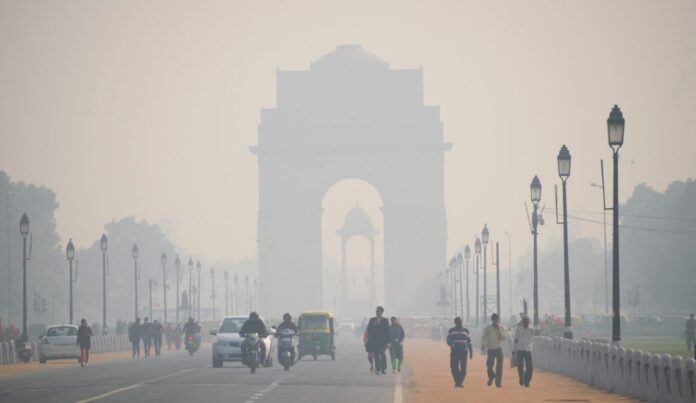Delhi has the most pollution incidents this winter compared to the previous six years. According to an analysis by the Centre for Science and Environment (CSE), this winter saw the highest number of smog episodes in the nation’s capital in six years, despite lower levels of smoke from farm fires impacting Delhi.
This was due to “unusually low surface wind speeds,” which trapped local pollution levels that were already high.
The report identified this as the “driving factor” for the poor air quality this winter. The average surface wind speed in Delhi in November was 9.8 m/s, the lowest in the last six years.
This is because, as the data shows, low wind speeds inhibit the horizontal dispersion of pollutants, while the inversion occurrence during the winter already inhibits the vertical dispersion of pollutants. During the winter, inversion occurs when warm air above traps cold air near the earth’s surface.
By comparison, the average wind speed in November 2021 was 11 m/s, compared to 12.4 m/s in November of the previous year. The India Meteorological Department’s wind speed statistics were used in the analysis.
“The reason for the lower-than-usual wind speed is unclear, but it has persisted throughout November and December. Pollutants have remained lodged as both vertical and horizontal mobility have ceased.
Thus, despite the fact that there wasn’t much smoke from agricultural fires and the winter was not as cold as it had previously been, there was still a lot of pollution this year. Due to unfavorable weather, hardly much smoke from farm fires has reached Delhi.
According to NASA data, the number of agricultural fires reported this year is comparable to that of last year, according to CSE’s Avikal Somvanshi, who was a member of the analytic team.
The report stated that “this winter has made exceptionally bad despite lesser smoke from farm stubble fires” because of the local pollution that has been trapped. According to calculations, farm fires contributed 1.48 metric tons of PM2.5 to Delhi’s PM2.5 levels in November—the lowest amount in the previous six years.
Despite agricultural fires’ less contribution, this winter’s smog episodes in the nation’s capital were the most polluted in six years, meaning that the air quality remained in the “severe” category for at least three days in a row.
According to the data, there were three of these episodes by December 24 and a fourth one at the end of December this year.

































